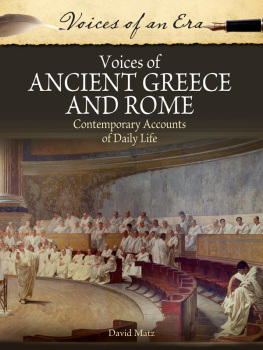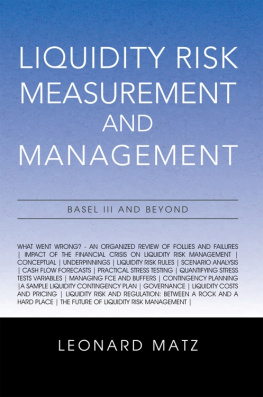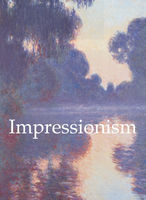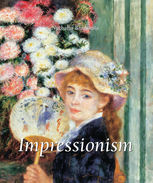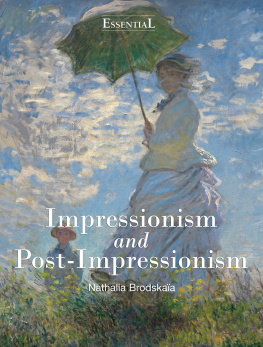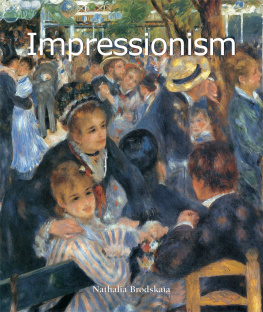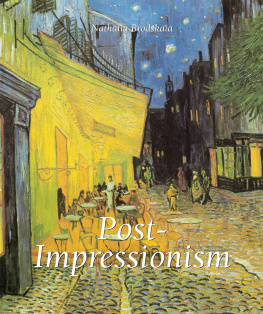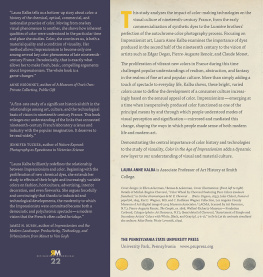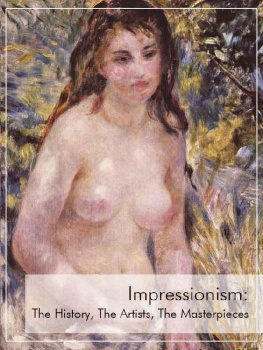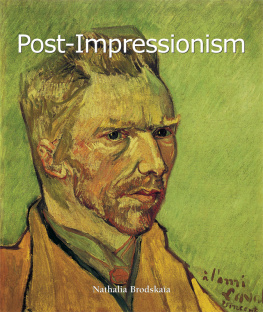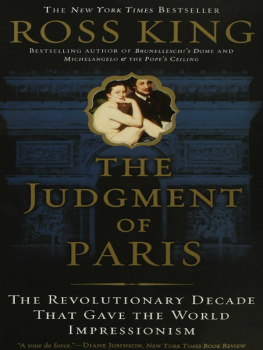Lasting Impressions
Literature Now
Literature Now
Matthew Hart, David James, and Rebecca L. Walkowitz, Series Editors
Literature Now offers a distinct vision of late-twentieth- and early-twenty-first-century literary culture. Addressing contemporary literature and the ways we understand its meaning, the series includes books that are comparative and trans national in scope as well as those that focus on national and regional literary cultures.
Caren Irr, Toward the Geopolitical Novel: U.S. Fiction in the Twenty-First Century
Heather Houser, Ecosickness in Contemporary U.S. Fiction: Environment and Affect
Mrinalini Chakravorty, In Stereotype: South Asia in the Global Literary Imaginary
Hctor Hoyos, Beyond Bolao: The Global Latin American Novel
Rebecca L. Walkowitz, Born Translated: The Contemporary Novel in an Age of World Literature
Carol Jacobs, Sebalds Vision
Sarah Phillips Casteel, Calypso Jews: Jewishness in the Caribbean Literary Imagination
Jeremy Rosen, Minor Characters Have Their Day: Genre and the Contemporary Literary Marketplace


Columbia University Press
Publishers Since 1893
New York Chichester, West Sussex
cup.columbia.edu
Copyright 2016 Columbia University Press
All rights reserved
Library of Congress Cataloging-in-Publication Data
Names: Matz, Jesse, author.
Title: Lasting impressions : the legacies of impressionism in comtemporary culture / Jesse Matz.
Description: New York : Columbia University Press, 2016. | Series: Literature now | Includes bibliographical references and index.
Identifiers: LCCN 2016018775 (print) | LCCN 2016034377 (ebook) | ISBN 9780231164061 (cloth : alk. paper) | ISBN 9780231543057 (electronic)
Subjects: LCSH: Impressionism in literature. | Art and literature. | Impressionism (Art)
Classification: LCC PN56.I5 M38 2016 (print) | LCC PN56.I5 (ebook) | DDC 700/.411dc23
LC record available at https://lccn.loc.gov/2016018775
A Columbia University Press E-book.
CUP would be pleased to hear about your reading experience with this e-book at cup-ebook@columbia.edu.
Cover design: Jordan Wannemacher
Cover image: Musee Marmottan Monet, Paris, France/Bridgeman Images
Contents
I would not have written this book without the encouragement of editors who have been such a great help to so many of us. Douglas Mao and Rebecca Walkowitz invited me to contribute an essay to their book Bad Modernisms, and thanks to their wonderful editorial stewardship, that essay, which became this books , also became the basis for the project as a whole. Another chapter went from a conference paper to an essay for David Jamess collection, The Legacies of Modernism, and that led, in turn, to his invitation to publish the larger project in this series at Columbia. David James and his series co-editors Matthew Hart and (again) Rebecca Walkowitz enabled the development of the project at every stage. I recall gratefully and fondly many moments when their support and guidance were decisive, and of course their own work inspiringly set a high bar for achievement in this field. When Philip Leventhal took the reins as editor, the book gained in intellectual and professional distinction, and I am also grateful to Miriam Grossman and Leslie Kriesel for their work bringing the book to completion. My superb research assistant Aaron Stone also gave me invaluable help in locating rights holders and also some of the books key examples.
Five friends, all far better scholars than I, read parts or all of five chapters and gave me crucial advice about them. James Carsons eagle eye and sharp mind transformed the introduction. Kate Elkinss theoretical expertise helped me clarify the invited talk that became intellectual and personal generosity were crucial in many ways, and Nico Israel, also incredibly generous and so helpfully brilliant, gave me excellent advice. Sophia Padnos offered marvelous editorial guidance.
James Carsons advice came as part of a seminar session (devoted to discussion of this books introduction) that also included Piers Brown, Jennifer Clarvoe, Deborah Laycock, Tessie Prakas, Patsy Vigderman, and Nobuko Yamasaki. A prior session of the same seminar that helped me with also included Laurie Finke, Sarah Heidt, and Kim Mc-Mullen. Also invaluable has been the support of the group of modernist scholars that has met monthly for more than ten years at the lovely home of Stephen Kern, including Murray Beja, Kate Elkins, Ellen Jones, Brian McHale, James Phelan, Bill Palmer, Jessica Prinz, and others. Scott Klein and Michael Moses asked me to write an essay on Jean Renoir, and research for that project greatly enhanced this books work on French impressionist cinema. Similarly, an essay prompted by Michael DArcy and Matthias Nilges helped me develop thoughts about impressionism after film, as a context for this books account of the fiction of David Mitchell.
Friends and colleagues who gave me vital help on particular points include Eliza Ablovatski, Reed Baldwin, Ian Baucom, Fred Baumann, Gary Bowman, Jessica Burstein, Robert Caserio, Sarah Cole, Thomas Davis, Matthew Eatough, Philip Fisher, Laura Frost, Andrzej Gasiorek, Ccile Gudon, Marcell Hackbardt, Lewis Hyde, Grant Johnson, Pericles Lewis, Janet Lyon, Natalie Marsh, Wendy Moffat, Don Monson, Mona Nacey, Ilona Srmny-Parsons, Christopher Reed, Max Saunders, Jen Schoenfeld, Urmila Seshagiri, Jonah Siegel, Joy Sperling, Anna Sun, Helen Vendler, and Stephen Volz. (If I have forgotten to name others, it is only because this book has been too long in the making.) I am deeply grateful to Rka Mihlka, whose fine translations enabled me to read material on Bla Kontuly, and my cousin Lili Mrk, who helped me communicate with Hungarian museums and galleries. In the final stages, people including Kay Peterson at the Smithsonian and Tracey Panek at Levi Strauss & Co. Archives were graciously helpful with images and permissions. Much earlier, my critical insight into impressionism developed under the instruction of my dissertation advisors, Paul Fry and Mark Wollaeger, and I remain indebted to them for everything.
Kenyon College gave me support through Faculty Development Grants and, most importantly, the Newton Chun Award. My mother, the painter Susan Matz, graciously gave me permission to use her Kontulysincluding one of my sister, Patty Matz, upon whom I always depend and who gave me such loving care while I was trying to write this book. Support and inspiration also came from the rest of my family, Melvyn Matz, Alayne Baxter, Morty Peritz, Chris Brozyna, Gordon Matz, Guy Matz, Jennie Matz, Sadie Matz, August Matz, and Skyler Brozyna. And then there is Jeffrey Bowman, who needs no acknowledgment but still.
Material in this book appeared in substantially different form in the three essays mentioned above: Cultures of Impression, Bad Modernisms, ed. Douglas Mao and Rebecca L. Walkowitz (Durham: Duke University Press, 2006), 298330; Pseudo-Impressionism? The Legacies of Modernism: Historicising Postwar and Contemporary Fiction, ed. David James (Cambridge University Press, 2012), 114132; and Impressionism After Film, The Contemporaneity of Modernism, ed. Michael DArcy and Mathias Nilges (London: Routledge, 2015), 91104.
Bla Kontuly, Pseudo-Impressionist
Two still-life pictures hung in my childhood home (). Then again, their dates1962, 1963would have distinguished them from actual impressionist pictures, as would the dark palette, dissimilar to the impressionists higher tones. But had you asked me, I would have said only that they were pictures of fruit and flowers and that they were art. I had no sense of their style or significance and certainly no way to judge their value. Really, I hardly saw them. They were simply natural features of our domestic environment. My innocence, however, lasted only until I was fifteen, when someone made me see these pictures all too clearly.
Next page

